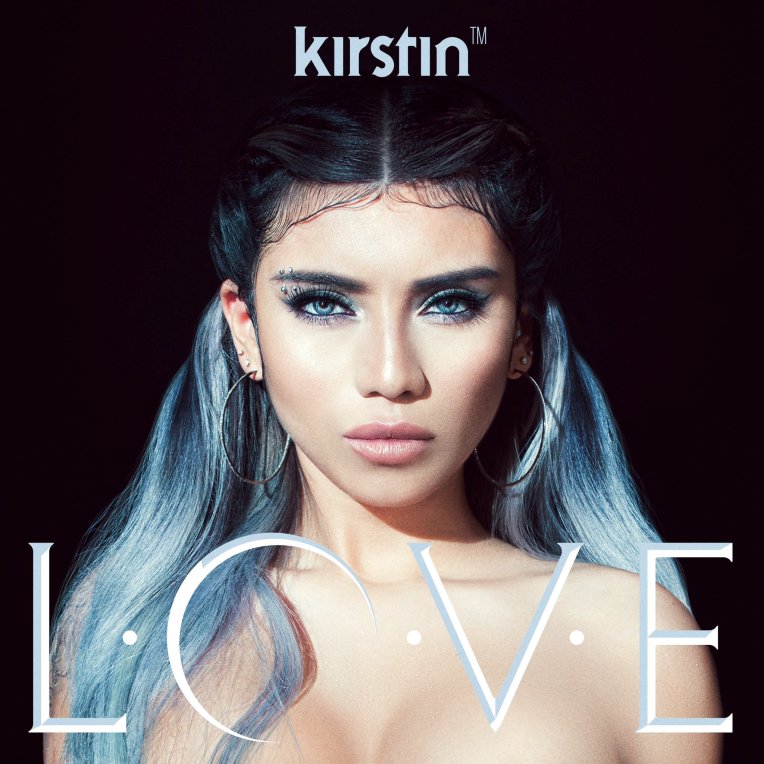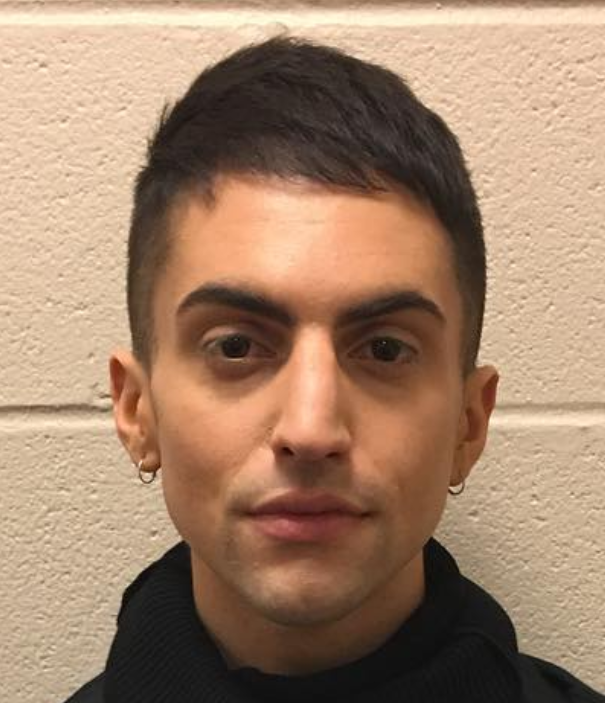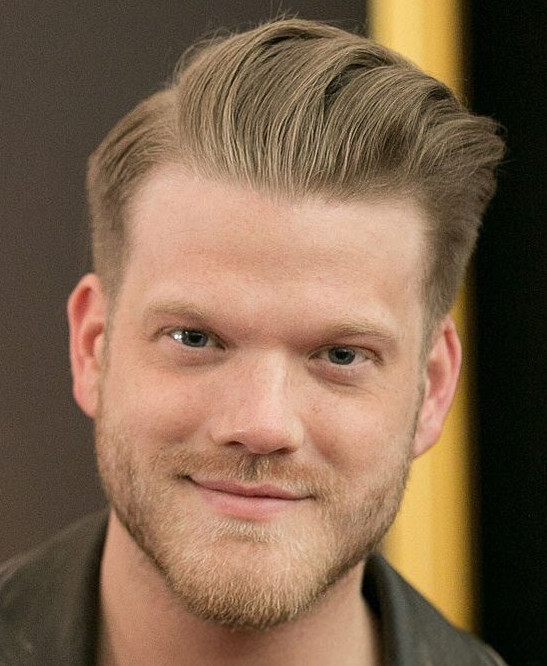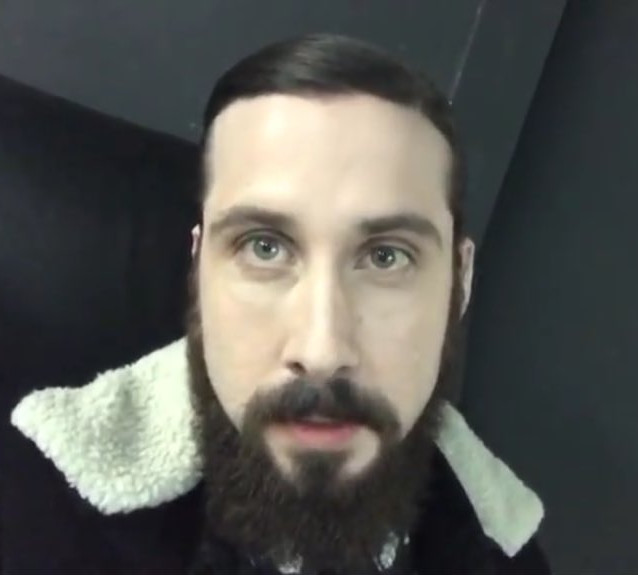Every time I’ve put serious effort into drawing Kevin Olusola well, I’ve greatly improved as an artist. Drawing to prepare this tutorial was no exception. Kevin’s deep brown skin tends to pick up strong highlights and shadows, so this tutorial walks through creating a fully-shaded pencil portrait.
For this tutorial, you’ll need these materials:
- A sheet of white paper
- A pencil with an eraser. I used a #2 pencil, but if you have a graphite set, it will serve you even better.
- Several cotton swabs, or tissues, or both. These are used during blending, to make shading nice and smooth.
First we’ll outline to ensure correct proportions and facial feature placement. Then we’ll shade region by region. In each region, we’ll fill, then blend, then detail.
Here’s our reference photo: a nice shot of Kevin smiling and facing the viewer.
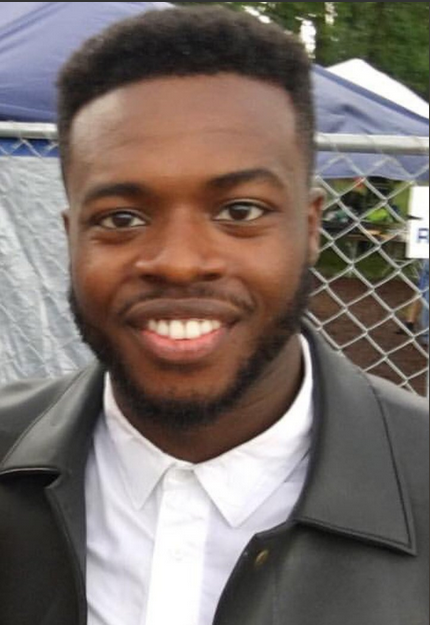
1. Outline Head and Shoulders
As we outline, we’ll apply these principles:
- Work large to small.
- Measure proportions.
- Look for shapes and angles.
We work large to small, to ensure that greater proportions are correct before we add smaller details. Even the most attentively drawn details will fail to capture a likeness if their size or placement is wrong for the subject’s face.
Let’s measure proportions to get the head shape. First I draw a vertical line of symmetry, then a horizontal line for his eye level, and give it a width. His face is turned a little, so I place proportions as I see them and draw the part of the line to the right of center longer than the part to the left. I notice that the pupils of Kevin’s eyes are about halfway between the edge and center of his face, on each side.
Now I’m placing guide marks along the center line of symmetry. A little less than half a face width up from eye level: his hairline, then a bit above that, the top of his hair. A little less than half a face width down from eye level is where Kevin’s upper lip meets his teeth, and then less than half a face width down from that, his chin. The corners of Kevin’s mouth happen to line up roughly with his pupils, so I extend guides down from there.
That’s enough marks to guide me as I outline his face. Chin width isn’t far off from the width of those corners-of-mouth guides I made, with some rounding. (As I try this out, I see that my chin mark is a little off, so I adjust it.) And then the corner of his jaw (again, rounded on Kevin) is vertically pretty close to the level of the mouth line, and horizontally lines up with his head width.
Then I outline his head above the eyes in two lines: the hairline (where forehead meets hair), and the line for the top edge of the hair. Notice that the edge line curves out a bit from the face at eye level, and the hairline doesn’t curve in much from face width. Kevin has a high, wide forehead; observe carefully and draw what you see. The hairline and edge line follow similar curves up top. And here’s what I have now:
Step back and check whether the head outline looks like Kevin, or if anything needs fixing. I’m satisfied with it so far, so I look for shapes and angles as I add some more basic face shapes: ears, beard line, imaginary eyebrow lines, and here we are.
But before we dive into face detail too much, let’s draw in his jacket and shirt. Notice where face meets jacket; that’s where to start your mark. Watch the slope of the jacket on his shoulders and try to match. Now trying to copy the curves of the jacket and shirt collars, and here’s what I have.
2. Outline Facial Features
Now I look for some more shapes and angles for drawing the face. I’ve sketched some diagonal lines that the nose and mouth seem to reach to, so I sketch those as guides. Then I sketch the basic shapes of eyes, nose, and mouth.
Everything’s roughly where it belongs, so I’ll go ahead and add more detail. I shape the eyebrows, eyes, nose, and mouth carefully based on what I see. I reshape the diagonal nose and mouth guides to match the smile folds on Kevin’s face.
This is enough detail now, that it’s time to remove the guides and bring the eyes to life, to prepare to take a harder look for minor adjustments to the outline before we start shading.
A few minor adjustments and a mustache later, I’m satisfied with my outline.
Here’s an animation of the outlining process:

3. Add Shading
We’ll be shading a dark-skinned man wearing a black jacket, so a lot of graphite is about to go down! I’m left handed, so to avoid smudging my work and my hand as I go, I’m going to shade region by region, right to left. If you’re right handed, I recommend shading left to right.
We’ll shade each region in three steps:
- Fill
- Blend
- Detail
Below I show each step.
Left: reference photo. Middle: jacket filled but not yet blended. Right: blended.
While filling, watch for light-dark variations on the jacket in the reference photo, and shade lighter or darker to match. A graphite set has pencils of different light and dark values, and can help you get darker dark shades, subtler variations in light shades. But even a #2 pencil can give you a broad value range as you press lighter or harder.
To blend, rub with a tissue or cotton swab. Try to avoid blurring where there should be a sharp delineation, but if some blur does happen, you can fix this with eraser and pencil during detailing. For now, I hold off on detailing, because most of this region’s details are shared with the collar region, which I’m shading next. Here we go:
- Fill. Aim to match the lights and darks you see.
- Blend. Rub with a tissue or cotton swab to make it smooth.
- Detail. Sharpen edges. Use eraser to brighten highlights, and pencil to darken shadows, and then spot-blend as needed. Add finishing touches until the region looks complete.
Kevin’s neck and face are next! I forgot to show progress pictures of neck shading, but it was straightforward, mostly a gentle dark-to-light gradient, filled and blended, with a thin shadow near the collar that I touched up while detailing.
Here’s progress on one side of Kevin’s face.
- Fill. With the shading so rough and the hair not yet colored in, Kevin looks like an old man! But the important thing here is that I”m watching for highlights and shadows in his face.
- Blend. Now it’s smoother. When blending, I’ve found that an already-darkened cotton swab can darken areas slightly, and a tissue can lighten areas. For precision blending of small areas, a clean cotton swab works well.
- Detail. Now I use eraser and some spot blending to restore a highlight I’d missed. I restore details that had been lost in blending, and I add more detail to the eye. I start to fill in the hair.
Now the hair needs some blending and detailing of its own. I filled with a medium shade to give the hair a gray base shade; now I blend it. Then I draw tight black loops over the gray base shade; this gives his hair and beard a textured look.
As I’m moving right to left (and again, I advise right handers to shade left to right), I shade the shirt next.
- Fill. Since this is a white shirt, filling just means adding a few light lines where I see shadows and folds.
- Blend. Now it’s smooth. Some edges will be blurred, but we take care of that when we…
- Detail. Now the buttons are visible again, and the collar has crisp edges.
This is where it gets interesting. I fill and blend the chin and mouth. Again, I detail the beard with tight coils.
Lip detailing is your chance to make fine adjustments to lip shape; slight adjustments can make a big difference to likeness and expression, so examine the reference photo carefully. Lower lip details for Kevin are complex: there’s an uneven “edge”, not seen on light skinned people, where skin pigmentation gives way to an underlying pink.
I draw in the teeth only after shading the surrounding area. To start drawing teeth, I recommend first drawing the dark shapes around them: the bottom edge of the teeth, and the gums, where visible, just above. These will help guide the lines between teeth, which are typically best kept light.
Now I move to the nose and middle forehead. Fill, blend, detail. These progress pictures show me at the start of filling, and then when I’ve filled and start to blend, and then once I’ve blended and use my cotton swab to make the next region’s highlights a light gray. As you get used to shading, blending, and detailing, one step will flow into another as second nature.
Now the left side of the face. Fill, blend, detail. Now both eyes are fully detailed. We’re getting there!
While I was detailing, I saw some areas that needed darkening about the eyes and nose, so I penciled them in darker. After blending, they look like the picture on the right.
Now the rest of the hair. Fill, blend, detail. I also adjust some highlights and shadows on the face; for instance, that one highlight near the hairline is more defined.
The face is almost complete. Before I move onto the remaining side of the jacket, I blend the shadows I’ve just added, and take a good hard look at what needs fixing. I give the lines between the teeth a more natural shape, with varying thickness. I fine-tune eye and lip and beard details and numerous other things until I’m reasonably satisfied.
Time for the rest of the jacket! I adjust the shape of the collar, then fill and blend it.
Then I fill and blend the jacket beneath, and then detail all this side of the jacket together. I didn’t go dark enough in shadows at first, so I darken now.
I blend my last bit of darkening on the jacket, and then step back and look for final touches. I fix the shading on the nose, other slight fixes to face and beard details, and now I pronounce it good enough. I sign it. Done!
Even now, I see that I would have been better off stepping back more often, and comparing my drawing with reference photo side by side while I worked, just the way I’m showing them in this tutorial. There are errors I missed clear back in the proportions-placing stage! (And now you have the opportunity to spot them and not repeat my mistakes.) But at this point I’ll let it go, and remember this:
Art doesn’t have to be perfect to be wonderful.
Here’s a progress animation of the entire process.

Getting Kevin’s shading right was quite a project!
By the way, months ago when made my first serious attempt at drawing Kevin, this was before I’d learned much about blending. I foresaw that my lack of skill at shading dark skin on white paper would be a problem, so I ended up drawing him with Prismacolors on brown paper. Bringing depth to his face by drawing highlights as well as shadows felt like magic from start to finish. I highly recommend this approach: if you have access to a soft white colored pencil and some brown paper, give it a try!
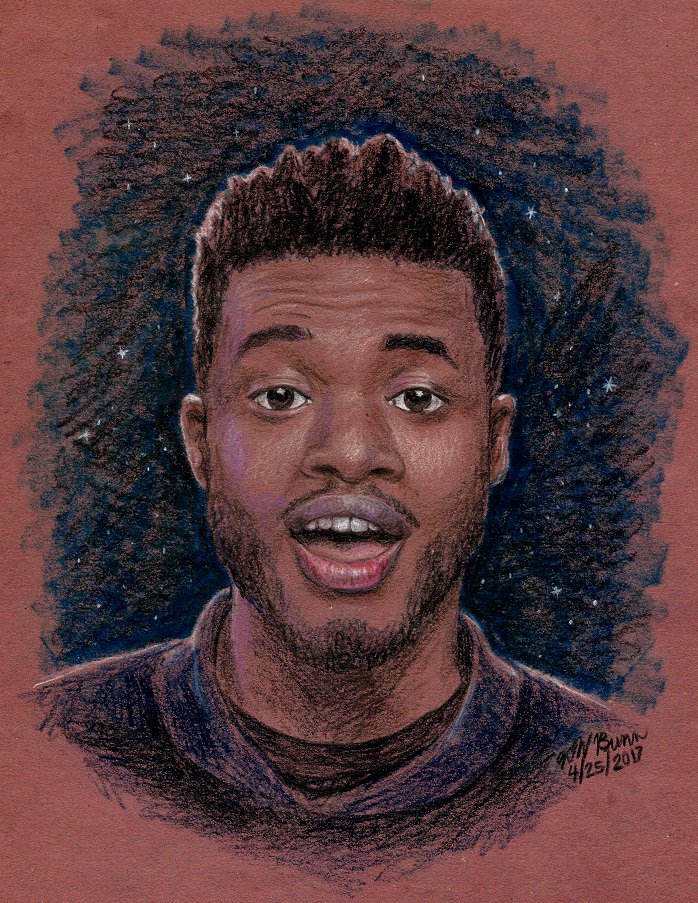
This tutorial is part of a series on drawing the members of Pentatonix:
- How to draw Avi
- How to draw Scott
- How to draw Mitch
- How to draw Kirstin
- How to draw Kevin



















































